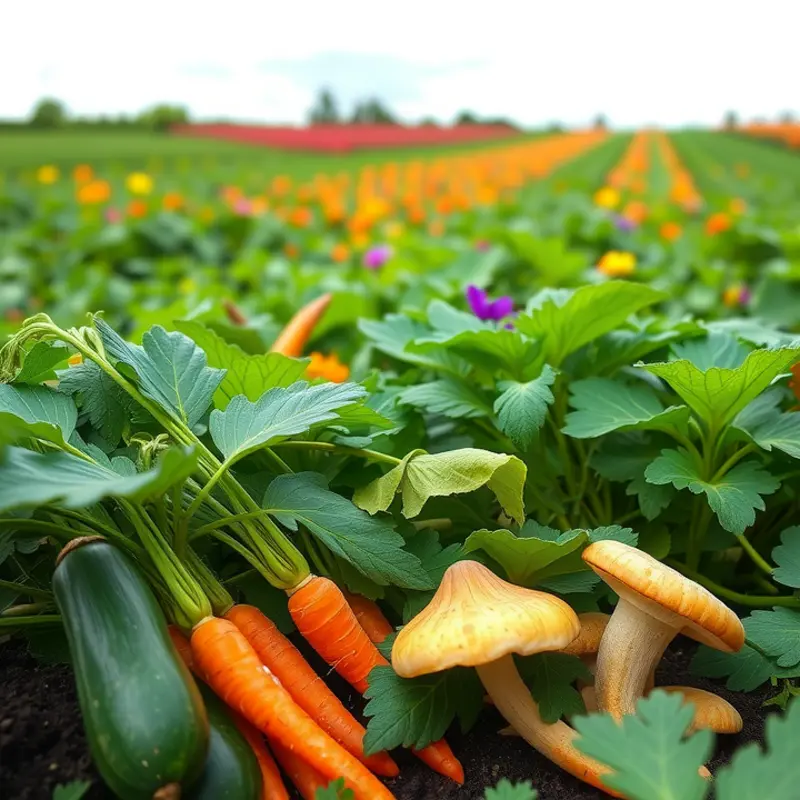For home cooks and those mindful of their dietary choices, breadcrumbs can sometimes feel like an essential ingredient. However, various alternatives can provide similar texture and flavor without relying on traditional bread. Whether you’re gluten-free, low-carb, or simply looking to mix things up in your kitchen, these substitutes can elevate your meals while accommodating diverse dietary needs.
Nutritious Alternatives: Grains and Seeds

When you’re seeking to optimize your diet without losing out on flavor, consider using grains and seeds as substitutes for breadcrumbs. Turning to wholesome grains and nutrient-dense seeds can enhance the health quotient of many dishes, from meatballs to casseroles.
Oatmeal is a versatile option. It provides a heartier texture and is a fantastic source of soluble fiber, which supports cardiovascular health. Use quick oats for a milder texture. Grind them slightly to mimic the consistency of breadcrumbs, ideal for binding meat mixtures or adding a crispy topping to casseroles.
Equally compelling is quinoa, often celebrated for its high protein content and essential amino acids. This pseudocereal adds a nutty flavor and lightness to your dishes. Cooked quinoa can substitute breadcrumbs in meatloaf or vegetarian patties. Remember to drain it well to maintain the right texture without excessive moisture.
Flaxseeds, known for their omega-3 fatty acids and lignans, can work marvelously as a binding agent. Ground flaxseeds are particularly effective when combined with water to form a gel-like consistency. This mixture can replace breadcrumbs in plant-based recipes, delivering a subtle nutty flavor while bolstering nutrition.
Among other noteworthy grains, cornmeal stands out for its crumbly texture and subtle sweetness. It especially complements coatings for fried or baked foods. The fine granulation of cornmeal makes it adaptable in many recipes, offering a warm flavor profile that pairs well with savory spices.
Chia seeds deserve attention too. Like flaxseeds, they develop a gel-like consistency when mixed with liquid, enhancing the moisture content and binding abilities of your dishes. Chia not only provides fiber and omega-3s but also introduces a unique crunch.
For those inspired by global cuisine, millet introduces an exotic element rich in B vitamins and magnesium. Its fluffy texture when cooked makes it a worthy alternative to breadcrumbs in stuffed vegetables or fish.
Incorporating grains and seeds not only elevates the nutritional profile of your meals but also aligns with sustainable cooking practices. If you’re interested in exploring more about sustainable choices in the kitchen, discover eco-smart kitchen storage tips.
These substitutes do more than mimic breadcrumbs – they allow for culinary creativity while nourishing your body with vital nutrients. Each option offers a chance to experiment with flavors and textures, ensuring that your culinary creations are both health-boosting and delectable.
Vegetable-Based Options: Creative Textures

Vegetables are a fantastic source of creativity when replacing breadcrumbs. By using grated or chopped vegetables, you can add complex textures and nutritional benefits to your dishes. For instance, grated zucchini or carrots not only provide moisture but also infuse meals with subtle sweetness and a burst of color. Their naturally occurring water content can keep your dishes tender and flavorful, especially when baking.
When aiming for a more savory tone, finely chopped mushrooms are excellent. Mushrooms provide a deep, umami flavor, making them a versatile substitute in things like meatballs or veggie patties. Their spongy texture absorbs flavors well, ensuring every bite is rich and satisfying. Embrace varieties like portobello or shiitake for a more robust taste profile.
Cauliflower rice is another superb substitute. With its neutral flavor, it mingles into recipes seamlessly, allowing other ingredients to shine. This makes it perfect for binding together ingredients in baked dishes or adding bulk to stews and soups. Cauliflower’s low carbohydrate content is an additional benefit, making it popular in keto and low-carb diets.
When using vegetables as breadcrumb alternatives, be mindful of their water content. Vegetables like zucchini release water as they cook, which can affect the texture of your final dish. To counter this, try squeezing excess moisture out with a cloth or paper towel before incorporating them into your recipes.
These vegetable-based options are not only nutritious but are also easy to integrate into existing recipes. Incorporating more vegetables helps increase vitamin and mineral intake while offering unique textures and flavors. Trying these alternatives can help you create healthier, delicious meals without relying solely on traditional breadcrumbs.
For more sustainable and creative cooking practices, check out minimal prep dinner ideas, where efficiency meets deliciousness in your kitchen adventures.
Final words
Incorporating substitutes for breadcrumbs can not only make your cooking more adaptable but also align better with your dietary preferences. Utilizing grains like quinoa or seeds such as flax can enhance the nutritional profile of your meals. Meanwhile, vegetable-based options offer creative ways to add flavor and moisture, transforming your dishes into healthy masterpieces. Embrace these alternatives, and enjoy exploring new culinary possibilities while keeping your health goals in check.







